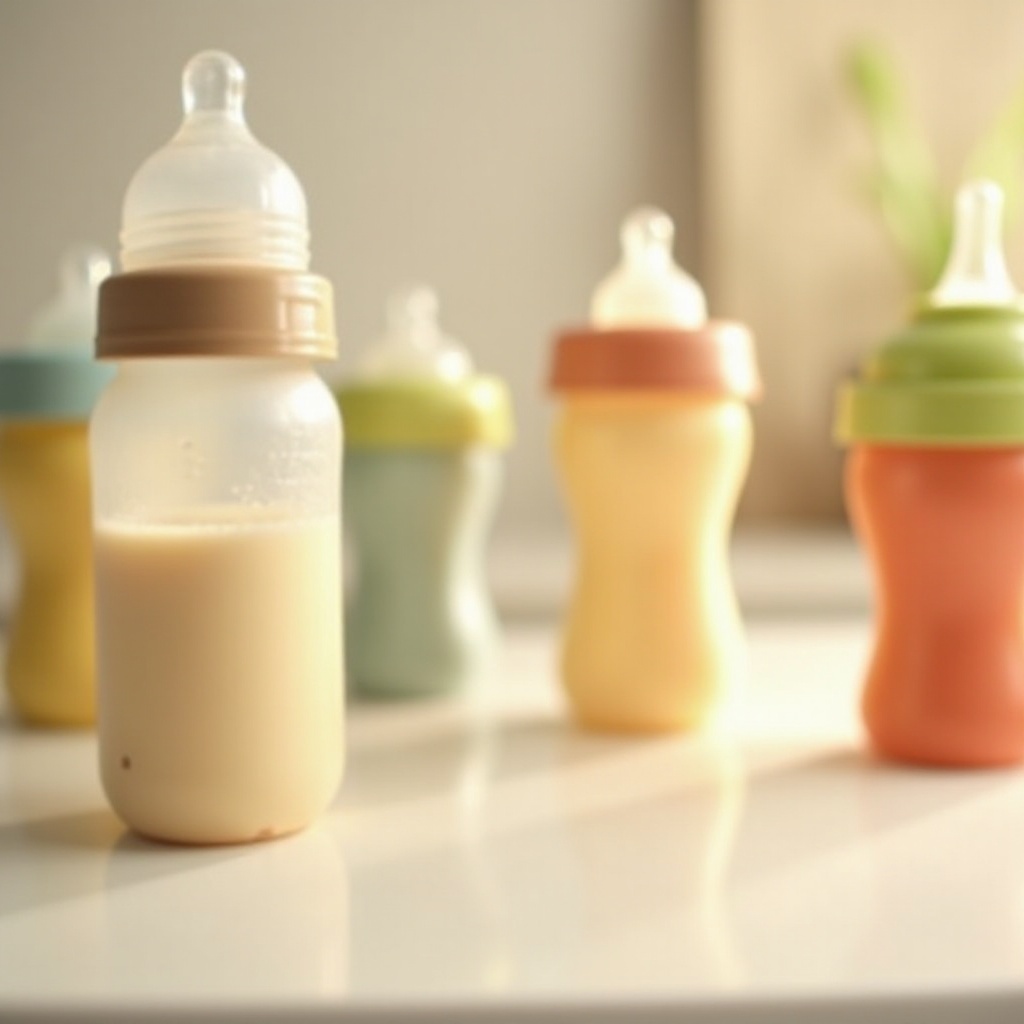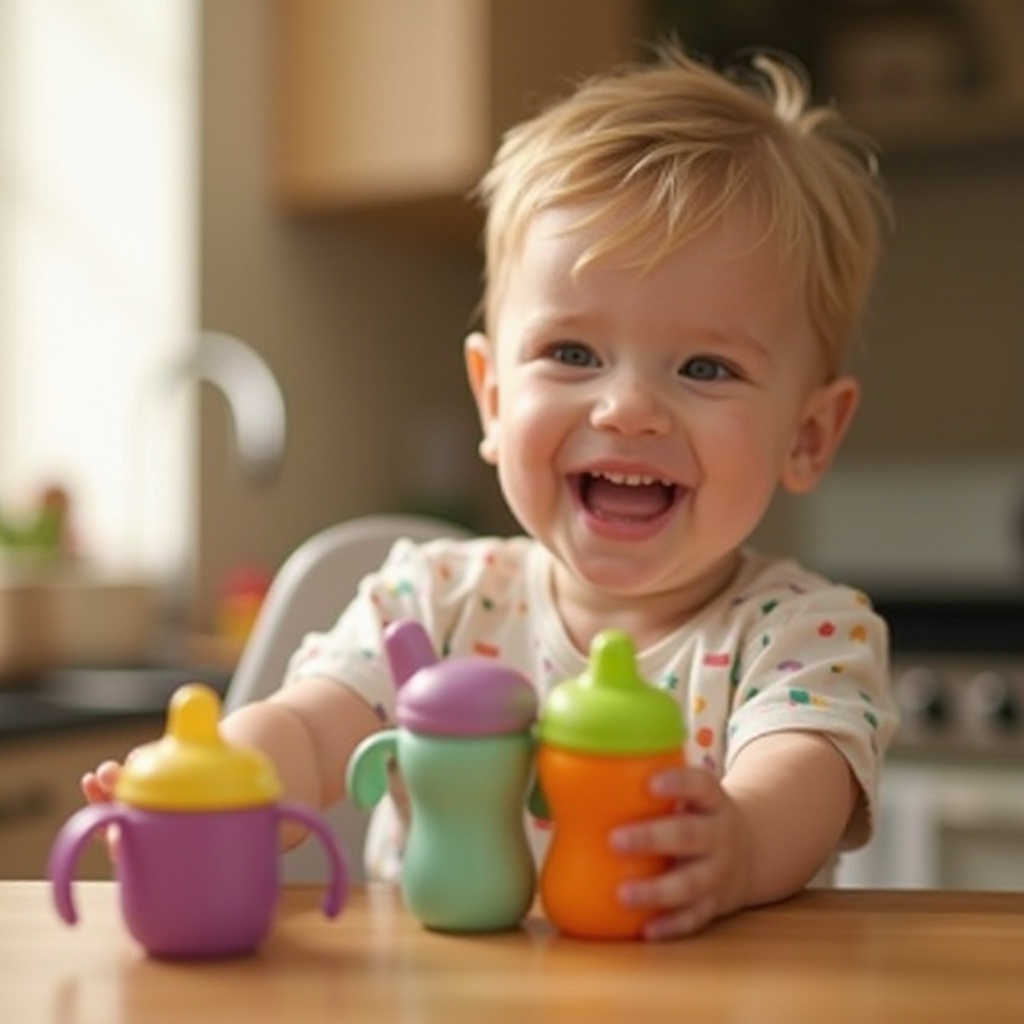Best Bottle to Transition from Bottle to Sippy Cup
Introduction
Transitioning from a bottle to a sippy cup is an important step in a baby’s development. It prepares them for independent drinking and aids in developing critical oral motor skills. Many parents face uncertainty in choosing the right products, but this guide aims to simplify the process. We will explore the essential features of transitional bottles and recommend top options to facilitate this important change.
Understanding the Transition Process
Changing from a bottle to a sippy cup is more involved than simply altering drinkware. It’s about gradually introducing your baby to a self-feeding method, enhancing coordination, and preparing them for future milestones like drinking from an open cup. This transition usually begins between six months and one year, although every child grows at their own pace. Understanding this process equips parents to make informed decisions, ensuring a trouble-free adjustment.
During this transition, you can introduce sippy cups alongside the bottles your baby is used to. This parallel approach eases babies into managing different textures and flows, making them more receptive to future changes. By grasping the essentials of this transformative phase, parents can better evaluate the necessary features of transitional bottles, setting up our next discussion on essential features.

Key Features of a Transitional Bottle
To choose a bottle that truly facilitates transition, consider the following features:
-
Material Considerations: Safeguard your child’s health by selecting BPA-free bottles. Silicone is a popular choice due to its flexibility and resemblance to a traditional nipple—ideal for easing the shift from bottle to cup.
-
Ergonomic Design: Opt for designs featuring easy-grip handles, which assist young hands in developing independence during feeding. Ergonomics foster autonomy and build confidence, essential during this phase.
-
Ease of Cleaning: Ensure good hygiene with bottles designed for simple cleaning. Models with minimal hard-to-access areas and dishwasher compatibility are best.
Understanding these critical features allows parents to select the most appropriate bottles, making the transition phase easier and more effective. This knowledge flows naturally into exploring specific models that embody these attributes.
Best Transitional Bottles to Consider
Several brands stand out for their effectiveness in helping babies transition. The following models come highly recommended by parents:
-
Top Brand 1: Offering robust construction and ergonomic handles, this bottle simplifies the self-feeding process. The soft spout gently accommodates tender gums.
-
Top Brand 2: Featuring an innovative vent system to reduce gas and fussiness, this model’s adjustable handles offer comfort during the transition.
-
Top Brand 3: Known for its anti-spill design, this bottle mimics breastfeeding to help babies cope naturally with the change.
These brands and models have proven their worth through parent feedback and product reviews. Choosing any of these ensures reliability and ease during this critical developmental phase. Having covered ideal transitional bottles, let’s now incorporate sippy cups effectively into your routine.
Incorporating Sippy Cups into the Routine
Introducing sippy cups into your baby’s routine is a strategic move. Offer sippy cups alongside bottles at mealtimes to facilitate acclimatization to new drinking methods. Gradually reduce bottle use as your baby becomes more accustomed to sippy cups. To effectively introduce sippy cups, consider the following steps:
-
Types of Sippy Cups: Depending on your child’s developmental stage, select from hard spout, soft spout, straw, or 360-degree cups. While hard spouts tend to last longer, soft spouts are gentler on sensitive gums.
-
Benefits of Early Introduction: Introducing sippy cups early promotes skill development and healthy dental habits, as it limits sugary drink intake.
Each type of sippy cup offers distinct benefits, understanding which helps ensure smooth adaptation into daily habits. As we summarize this information, bear in mind that patience and consistency are key to success.

Conclusion
Transitioning from a bottle to a sippy cup marks an exciting milestone in your child’s growth journey. By focusing on essential features, selecting reputable brands, and thoughtfully introducing sippy cups, you create a supportive environment for this process. Equip yourself with perseverance and patience; with time, your child will adapt, developing crucial skills for their future.
Frequently Asked Questions
When should I start transitioning my baby to a sippy cup?
It’s generally ideal to transition between six months and one year, tailored to your baby’s readiness signs.
Can I use a bottle warmer with sippy cups?
Yes, most bottle warmers support sippy cups if the material withstands heat. Always refer to product instructions.
What if my baby resists using a sippy cup?
Introduce the sippy cup gradually while integrating fun elements. Patience is key, as are exploring different cup styles.
